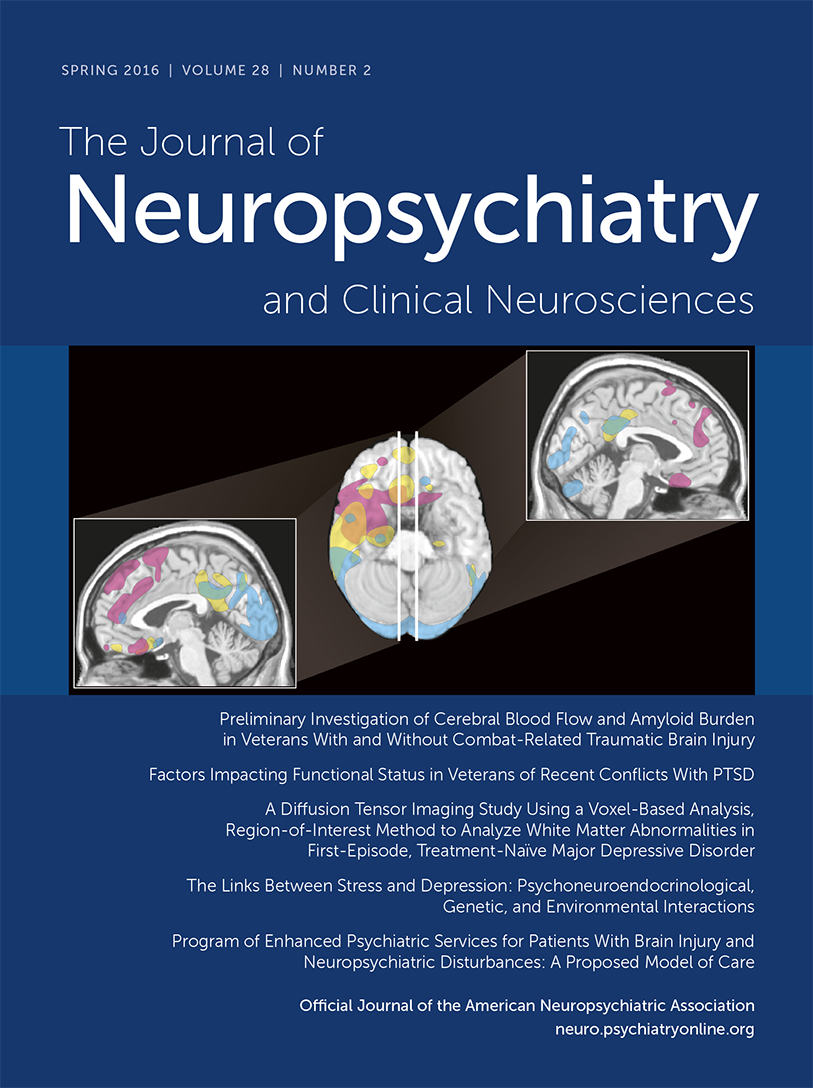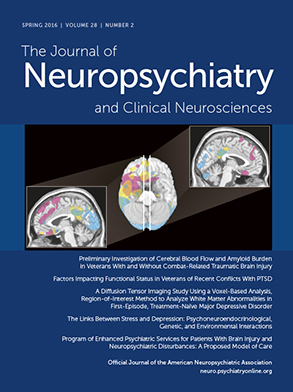Selective beta-1 blockers are commonly used in patients with established coronary artery disease (CAD) to reduce the risks for repeated cardiovascular events and cardiovascular disease mortality.
1 Despite their numerous advantages, the association between beta-1–selective beta-blocker (BB) use and cognitive functioning remains under debate because some studies have reported negative effects of BBs on cognitive functioning,
2 whereas other studies have failed to confirm such an association.
3 Moreover, the majority of studies have focused on global cognitive functioning, and an association of BB use with more specific cognitive domains remains to be identified.
The aim of this cross-sectional observational study was to investigate the association of beta-1–selective BB use with cognitive functioning in patients with CAD without dementia.
Methods
We invited 983 consecutive patients with established CAD undergoing an inpatient cardiac rehabilitation program within 2 weeks after acute coronary syndrome to participate in this study. This study excluded 261 patients (26%): 59 (6%) were unwilling to participate or met the study exclusion criteria (which covered well-established indexes and risk factors for cognitive impairment), 21 patients (2%) had moderate to severe global cognitive impairment based on the Mini-Mental State Examination (MMSE) (score <20), 62 patients (6%) were aged >80 years, 99 patients (10%) had past histories of stroke or coronary artery bypass grafting, and 20 patients (2%) had severe contiguous somatic illness. Thus, the final sample comprised 722 patients (73% men; mean age, 58±9 years). All patients were receiving standard medical treatment for secondary prevention of CAD according to clinical need,
1 which included beta-1–selective BBs, nitrates, and statins. Benzodiazepines were used for the short-term symptomatic management of anxiety, and no patients were taking sedative-hypnotic medication.
The Lithuanian Biomedical Research Ethics Committee approved the study protocol, and each participant gave signed informed consent before inclusion in the study.
4Sociodemographic, clinical, and traditional vascular risk factor characteristics were evaluated during the first 3 days of admission to the clinic. Sociodemographic characteristics included age, gender, and total years of education. Clinical characteristics included current medication use, New York Heart Association (NYHA) functional class,
5 and the presence of heart failure defined as left ventricular ejection fraction (LVEF) of ≤40% on cardiac echocardiography. Vascular risk factors included smoking habits, obesity (body mass index [BMI] >30 kg/m
2), presence of arterial hypertension, and diabetes.
6 All patients were also evaluated for depressive and anxiety symptoms with the Hospital Anxiety and Depression Scale (HADS),
7 which previously demonstrated adequate psychometric properties in Lithuanian patients with CAD.
8The Digit Span Test
9 and the Digit Symbol Test
9 were used to assess auditory attention, mental flexibility, psychomotor performance, and incidental learning. Trail Making Tests A and B
10 were used to measure perceptual speed and task switching. Participants were considered impaired in the specific cognitive domain if their scores were at or below the seventh percentile of the present study population.
First, using the two-tailed Student’s t test for continuous variables and Fisher’s chi-square test for categorical variables, we compared sociodemographic characteristics, clinical characteristics, vascular risk factors, and cognitive testing results in patients who were currently taking beta-1–selective BBs with patients who were not. We used Benjamini-Hochberg adjustment for multiple comparisons in the cognitive function domain, setting a critical value for a false discovery rate of 0.15.
11 Next, we sought to investigate whether discovered differences of cognitive functioning testing results as a function of current beta-1–selective BB use were independent from sociodemographic characteristics, clinical characteristics, traditional vascular risk factors, and depressive/anxiety symptom severity. We utilized multivariable binary logistic regression analysis with the presence of impairment (score of ≤7th percentile of the current patient sample, representing cognitive performance of 1.5 SD below the mean value [Z score of −1.5]) in a specific cognitive domain as the dependent variable and current beta-1–selective BB use (compared with nonuse) as an independent factor. We adjusted for the following: age (in years), gender (men [1] or women [2]), educational status (up to 8 years [1], high school [2], or college/university degree [3]), other currently used medication (e.g., benzodiazepines, nitrates, and statins; use [1] or nonuse [0]), NYHA functional class, LVEF (≤40% [1] or >40% [2]), obesity (BMI ≤30 kg/m
2 [0] or BMI >30 kg/m
2 [1]), diabetes (absent [0] or present [1]), arterial hypertension (absent [0] or present [1]), smoking history (absent [0] or present [1]), depression symptom severity (HADS-D score <8 [1] or ≥8 [2]), and anxiety symptom severity (HADS-A score <8 [1] or ≥8 [2]).
All statistical analyses were conducted using SPSS 17.0 for Windows.
Results
Of the study patients, 646 (89%) were currently taking beta-1–selective BBs (metoprolol 50–100 mg/day). The majority of the study patients had a college or university degree (43%), were NYHA functional class II (75%), and had arterial hypertension (78%). Our results showed that 12% of patients had heart failure, 45% were obese, and 35% had a history of smoking. In addition, 13% and 34% of patients had moderate to severe depression (HADS depression score ≥8) and anxiety (HADS anxiety score ≥8) symptom severity, respectively. In regard to current use of other medication, 31% of patients were taking nitrates (e.g., isosorbide mononitrate 20–30 mg/day), 87% were taking statins (e.g., atorvastatin 20–40 mg/day), and 16% were taking benzodiazepines. Patients currently taking beta-1–selective BBs differed in educational status from those not using beta-1–selective BBs. Specifically, 49% of beta-1–selective BBs users had a high school education compared with 34% of nonusers (p<0.02). The proportion of patients with a college or university degree was higher among beta-1–selective BB users that nonusers (55% versus 42%, respectively; p<0.04). Statins were used more frequently by patients in the beta-1–selective BB users group compared with nonusers (88% versus 78%, respectively; p<0.01). Patients who took beta-1–selective BBs performed worse on the number of pairs recalled correctly portion of the Digit Symbol Test–Pairs relative to patients who were not taking beta-1–selective BBs (4.8±2.8 and 5.6±2.7, respectively; p=0.015). Performance on other cognitive function tests was not different as a function of current beta-1–selective BB use after adjustment for multiple comparisons (all p values >0.09) (
Table 1).
Next, we evaluated whether performance on the number of pairs recalled correctly portion of the Digit Symbol Test–Pairs as a function of beta-1–selective BB use was independent from evaluated clinical and sociodemographic characteristics and depressive/anxiety symptoms. In multivariate binary regression analysis, current beta-1–selective BB use was associated with greater risk for impaired performance on the Digit Symbol Test–Pairs (odds ratio=4.43; 95% confidence interval=1.02–19.20; p=0.047) after adjustment for age, gender, education, currently used medication, NYHA functional class, LVEF, obesity, diabetes, arterial hypertension, smoking history, depressive symptoms, and anxiety symptoms.
Discussion
Our results suggest that in patients with CAD without dementia, treatment with beta-1–selective BBs is associated with impairment in incidental learning and this association is independent from sociodemographic characteristics, clinical CAD severity, and symptoms of depression/anxiety. Current beta-1–selective BB use was not associated with other cognitive domains (auditory attention, mental flexibility, psychomotor performance, perceptual speed, and task switching) considered in this study.
A study analyzing patients with cognitive impairment (MMSE
<20) revealed a trend for worse delayed memory retrieval in patients who were taking CNS-active BBs.
12 Similarly, a recent study in patients with established CAD
2 reported that greater anticholinergic cognitive burden, as evaluated using the Anticholinergic Cognitive Burden Scale, was associated with worse performance on the tests measuring verbal fluency and executive functioning. Importantly, anticholinergic cognitive burden in the later study was mainly accounted by the BB use. Therefore, in this study, we decided to examine the plain effect of beta-1–selective BBs on cognitive functioning instead of global anticholinergic burden, which encompasses a spectrum of medication carrying anticholinergic actions and prevents us from investigating possible adverse cognitive actions of a single medication class. An adverse cognitive effect of beta-1–selective BB use remained evident even after adjustment for other medication carrying adverse cognitive actions, depression, anxiety, and CAD severity. Thus, adverse cognitive effects of beta-1–selective BBs should be considered in the setting of secondary CAD prevention.
The large sample size and evaluation of a spectrum of cognitive domains using well-established tests were the major strengths of this study. However, a sample of patients not using beta-1–selective BBs was rather small, and the cross-sectional design prevented us from evaluating the causal relationship between beta-1–selective BB use and cognitive impairment. Patient recruitment from a single cardiac rehabilitation center may have exposed our results to selection bias.
13
